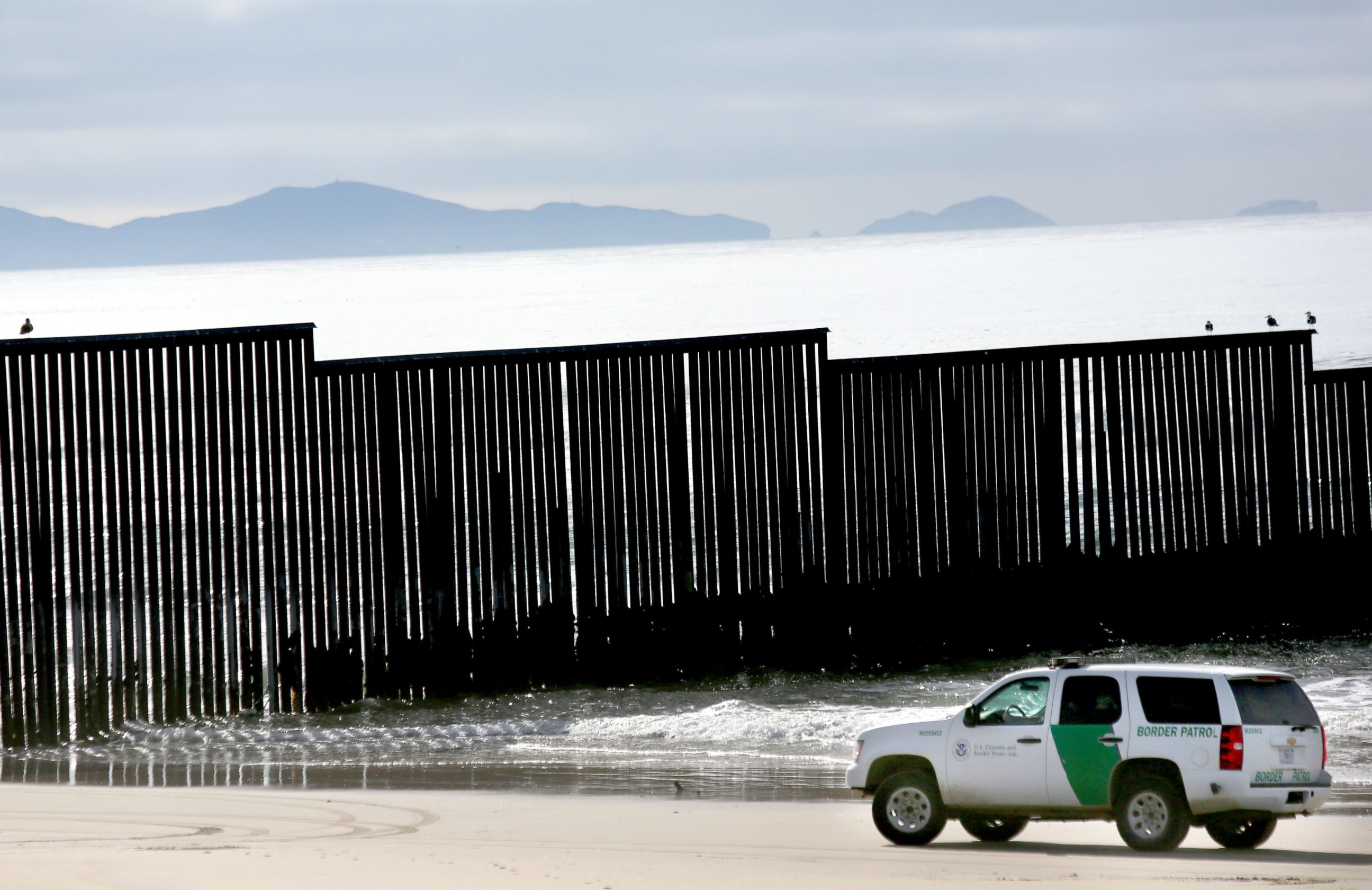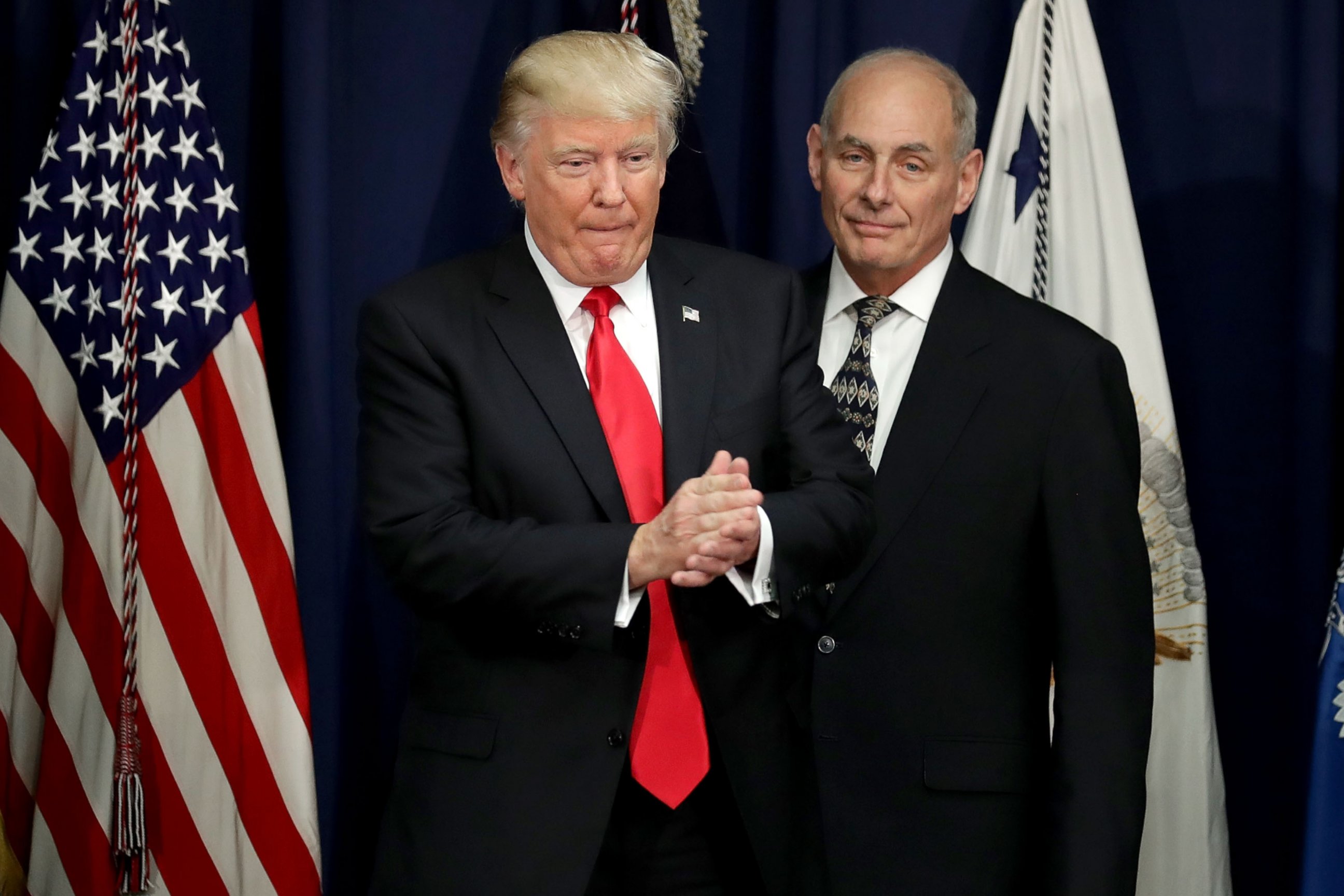Why Executive Order May Not Be Enough for Trump to Build Border Wall
For President Trump to get it done, he would need Congress’ help.
— -- One of President Trump’s leading campaign promises was to build “a wall” along the southern border of the United States to stem the flow of undocumented immigrants, and he started the process Wednesday during a visit to the Department of Homeland Security.
Trump signed an executive order to, as press secretary Sean Spicer explained during a briefing Wednesday, begin the building of a "large physical barrier" along the U.S.-Mexican border.
Spicer re-emphasized that “yes, one way or another, as the president has said before, Mexico will pay for it,” though offering no specifics on how it would be funded in the meantime.
For his part, Trump said in remarks at DHS Wednesday, "We are going to save lives on both sides of the border, and we also understand that a strong and healthy economy in Mexico is very good for the United States.”
The president also told ABC News Wednesday in his first one-on-one television interview since being sworn in that U.S. taxpayer dollars would be used to start the construction of the wall after negotiations between the United States and Mexico begin "relatively soon."
But still at issue is whether Trump’s executive authority is enough to move the proposed project forward. Here are some key questions to consider:
Can He Get It Done?
One of the first questions to ponder is whether he can legally build a wall? Yes, though most likely only if he can get Congress to pay for it.
But Trump has decided to begin the process on his own, signing two executive orders Wednesday that would increase the number of border patrol enforcement officers and lay the groundwork for building his proposed wall along unspecified portions of the 2,000-mile border with Mexico.
To that end, the Trump administration and GOP leaders are invoking a 2006 law -- the Secure Fence Act -- that authorized about 700 miles of fencing along the southern border. The goal of that law, with support from Democrats like then-Sen. Hillary Clinton and Sen. Chuck Schumer of New York, was to keep pedestrians and vehicles from crossing.
Then-President George W. Bush signed the measure after Congress approved it, and various kinds of fencing have since been constructed in Texas, New Mexico, Arizona and California.

Why Does He Need Congress?
President Trump has ordered the Department of Homeland Security to review its $41 billion annual budget and move funds within the organization to help fund the border wall effort. The House and Senate appropriations committees would have to approve any reallocation of funding internally.
“The department [of Homeland Security] can move money around to some degree; small amounts within individual agencies have reprogramming limits set in place by specific reappropriation committees,” Kenneth Gold, director of the Government Affairs Institute at Georgetown University, said.
But because the wall is expected to cost billions of dollars, it's more than likely that the White House will need additional money, which means the administration will have to ask Congress for it.
“The whole purpose of the appropriations clause of the Constitution is to place limits on what the president can do on his own,” Gold said. “Presidents cannot simply decide to obligate funds that Congress has not appropriated money for.”
House Speaker Paul Ryan, R-Wis., today said Congress will approve funding for the wall in a supplemental appropriations bill, which he and Senate Majority Leader Mitch McConnell of Kentucky estimate will cost between $12 to $15 billion.
"We intend to address the wall issue ourselves and the president can deal with his relations with other countries on that issue and others," McConnell told reporters today at the GOP policy retreat in Philadelphia.
House Minority Leader Nancy Pelosi, D-Calif., in response to Trump’s orders, Wednesday said in a statement, “With today’s sweeping and constitutionally suspect executive actions, the president is turning his back on both our history and our values as a proud nation of immigrants,” and “wasting billions of taxpayer dollars on a border wall Mexico will never pay for.”

How Would He Pay for It?
Trump said he envisions U.S. taxpayers’ paying upfront, and then being reimbursed by Mexico for the wall, which he has estimated could cost from $8 billion to $ 12 billon.
Whatever the cost, he told ABC News’ David Muir Wednesday, “We will be reimbursed at a later date from whatever transaction we make, from Mexico,”
Mexican officials, who canceled an upcoming scheduled meeting with Trump in protest, have repeatedly said they will not pay.
"I regret and reject the decision of the United States to continue building a wall that, that for years, far from uniting us, divides us," Mexican President Enrique Peña Nieto said in a taped message Wednesday. "Mexico does not believe in walls."
Trump said today that he and Mexican President Enrique Peña Nieto "agreed" to cancel their planned meeting in the United States next week.
For comparison, the portion of the 700 miles of fencing built in 2007, under the Secure Fence Act of 2006 signed by President Bush, was estimated to cost about $2.8 million a mile, according to the Congressional Research Service in a 2009 report to Congress.
It was also constructed using mostly the U.S. Army Corps of Engineers and the National Guard. The report also found “fencing constructed in FY2008, using mostly private constructors, cost about $5.1 million a mile.”
According to an analysis published in the MIT Technology Review, building a new 1,000-mile wall could cost as much as $40 billion. Their breakdown includes the current price of steel and concrete.
Trump has said he doesn’t need a wall to extend the entire length of the 2,000-mile border. “We need 1,000 because we have natural barriers … and I’m taking it price per square foot and a price per square, you know, per mile,” he told MSNBC last February.
But there are also costs associated with maintenance and upkeep.
“The Corps of Engineers also predicted that the 25-year, life-cycle cost of the fence [authorized in 2006] would range from $16.4 million to $70 million per mile depending on the amount of damage sustained by the fencing,” according to the 2009 Congressional Research Service report
This means that without Congress’ involvement, Trump likely wouldn’t have the funds not only to build the wall, but maintain it for years to come.
Would a Wall Even Work?
There are about 700 miles of U.S.-Mexico border fencing, officials note.
And Border Patrol already employs a “digital wall” with roughly 8,000 cameras monitoring the southern fence, ports of entry and watching above from helium balloons.
It also has resources that include more than 11,000 underground sensors, 107 aircraft, eight drones, 175 mobile surveillance units and 84 boats, allowing them, in Customs and Border Protection’s words, to monitor the border closer and more effectively.
“We can spend billions of dollars, to build a 10-foot wall on top of a 10,000-foot mountain,” former DHS Secretary Jeh Johnson said in a November speech, “but if you’ve come all the way from Central America, it’s not going to stop you.”




